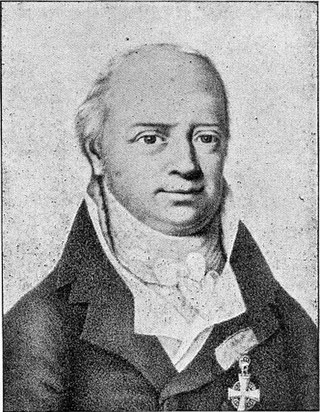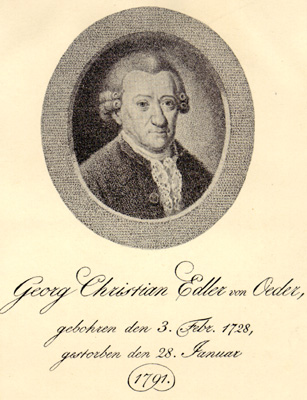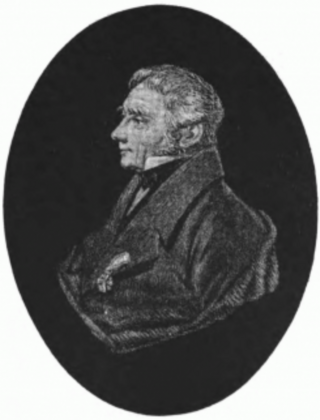

Flora Danica is a comprehensive atlas of botany from the Age of Enlightenment, containing folio-sized pictures of all the wild plants native to Denmark, in the period from 1761 to 1883.


Flora Danica is a comprehensive atlas of botany from the Age of Enlightenment, containing folio-sized pictures of all the wild plants native to Denmark, in the period from 1761 to 1883.
Flora Danica was proposed by G. C. Oeder, then professor of botany at the Botanic Garden in Copenhagen, in 1753 and was completed 123 years later, in 1883. The complete work comprises 51 parts and 3 supplements, containing 3,240 copper engraved plates. The original plan was to cover all plants, including bryophytes, lichens and fungi native to crown lands of the Danish king, that is Denmark, Schleswig-Holstein, Oldenburg-Delmenhorst and Norway with its North Atlantic dependencies Iceland, the Faroe Islands and Greenland. However, changes were made due to territorial cessations during the period of publication. After 1814, when the double monarchy of Denmark–Norway was abolished, very few Norwegian plants were included, and similar changes were seen after 1864, when the duchies of Schleswig and Holstein were ceded. However, in the mid-19th-century era of Scandinavism, the Nordiske Naturforskermøde in Copenhagen proposed to make Flora Danica a Scandinavian work. Thus, three supplementary volumes were issued, containing the remaining Norwegian plants and the more important plants only occurring in Sweden.
Oeder travelled extensively in the regions covered by the proposed Flora. The illustrations were produced by Michael Rössler (1705–1777), a skilled engraver from Nuremberg, and his son, Martin Rössler (1727–1782), who drew the plants on field trips with Oeder. [1]
The first ten issues appeared with a total of 600 plates. To produce the illustrations, both Rösslers moved to Copenhagen in 1755 and remained there until the end of their lives, with Michael becoming a copper engraver. Their illustrations are considered the best in Flora Danica, and set a benchmark in botanical illustration. Later illustrators were Johann Christian Thornam (1822–1908), Christian F. Mueller (1748–1814), the brother of the botanist editor Otto Friedrich Müller, for volumes 12 to 21, and Johann Theodor Bayer (1782–1873), for volumes 22–46, accounting for some 1500 plates. [2]
| Years | Fascicles | Plates | |
|---|---|---|---|
| Georg Christian Oeder | 1761–1771 | 1–10 | 1–600 |
| O.F. Müller | 1775–1782 | 11–15 | 601–900 |
| Martin Vahl | 1787–1799 | 16–21 | 901–1260 |
| J.W. Hornemann | 1806–1840 | 22–39 | 1261–2340 |
| S. Drejer, J. F. Schouw and Jens Vahl | 1843 | 40 | 2341–2400 |
| F. Liebmann | 1845–1853 | 41–43 & Suppl. 1 | 2401–2580 & S1-60 |
| Japetus Steenstrup and Johan Lange | 1858 | 44 | 2581–2640 |
| Johan Lange | 1861–1883 | 45–51 & Suppl. 2–3 | 2641–3060 & S61-180 |

In 1790 the Danish Crown Prince Frederik ordered a dinner set made decorated with exact copies of the plates of Flora Danica. The dinner set was meant as a gift for Russian Empress Catherine II. Catherine, however, never received it, as she died in 1796. It is currently on display at Christiansborg Palace, Amalienborg Palace and Rosenborg Castle.
The dinner set is still in use for special occasions in the Danish royal family (latest occasions 1980 & 2022). Copies of the set are sold by the Royal Copenhagen Porcelain Manufactory.

Carsten Niebuhr, or Karsten Niebuhr, was a German mathematician, cartographer, and explorer in the service of Denmark. He is renowned for his participation in the Danish Arabia expedition (1761-1767). He was the father of the Danish-German statesman and historian Barthold Georg Niebuhr, who published an account of his father's life in 1817.

Otto Friedrich Müller, also known as Otto Friedrich Mueller was a Danish naturalist and scientific illustrator.

Heinrich Christian Friedrich Schumacher was a Danish surgeon, botanist and professor of anatomy at the University of Copenhagen. Schumacher carried out significant research work in malacology, in other words on molluscs, and described several taxa.

Georg Dionysius Ehret was a German botanist and entomologist known for his botanical illustrations.

Johan Martin Christian Lange was a prominent Danish botanist.

The University of Copenhagen Botanical Garden, usually referred to simply as Copenhagen Botanical Garden, is a botanical garden located in the centre of Copenhagen, Denmark. It covers an area of 10 hectares and is particularly noted for its extensive complex of historical glasshouses dating from 1874.

Royal Copenhagen, officially the Royal Porcelain Factory, is a Danish manufacturer of porcelain products and was founded in Copenhagen in 1775 under the protection of Danish Dowager Queen Juliane Marie. It is recognized by its factory mark, the three wavy lines above each other, symbolizing Denmark's three water ways: Storebælt, Lillebælt and Øresund.

Frederik Michael Liebmann was a Danish botanist. Liebmann studied botany at the University of Copenhagen, although he never obtained a formal qualification. He went on study tours of Germany and Norway before becoming lecturer at the Danish Royal Veterinary School in 1837. In 1840 he travelled to Cuba and Mexico; on his return in 1845 he was appointed Professor of Botany at the University of Copenhagen. He became Director of the university's Botanical Garden in 1852, a post he held until his death four years later.

The Imperial Porcelain Factory, also known as the Imperial Porcelain Manufactory, is a producer of hand-painted ceramics in Saint Petersburg, Russia. It was established by Dmitry Ivanovich Vinogradov in 1744 and was supported by the Russian tsars since Empress Elizabeth. Many still refer to the factory by its well-known former name, the Lomonosov Porcelain Factory.

Martin Henrichsen Vahl was a Danish-Norwegian botanist, herbalist and zoologist.

Joakim Frederik Schouw was a Danish lawyer, botanist and politician. From 1821, professor in botany at the University of Copenhagen — first extraordinary professor, but after the death of J.W. Hornemann in 1841 ordinary. His main scientific field was the new discipline of phytogeography. He also served as director of Copenhagen Botanical Garden in 1841-1852. He was a leading figure in the National Liberal movement and president of the Danish Constituent Assembly in 1848.

Georg Christian Edler von Oldenburg Oeder was a German-Danish botanist, medical doctor, economist and social reformer. His name is particularly associated with the initiation of the plate work Flora Danica.

Christen Friis Rottbøll was a Danish physician and botanist: He was a pupil of Carolus Linnaeus.

Morten Wormskjold was a Danish botanist and explorer. He collected plants in Greenland and Kamchatka. The standard author abbreviation Wormsk. is used to indicate this person as the author when citing a botanical name.

Johan Theodor Holmskiold was a Danish noble, botanist, courtier and administrator. He was noted for his scientific work with fungi and development of the Charlottenborg Botanical Garden. His career included work as director of the Danish Postal Services and the Royal Porcelain Factory.
Events from the year 1761 in Denmark.
Hans Christian Lyngbye was a Danish priest and botanist, specialising in algae.

Ernst Ferdinand Nolte was a German botanist. He was son-in-law to chemist Christoph Heinrich Pfaff (1773–1852).
Elisa Marie Thornam was a Danish landscape painter and botanical illustrator who contributed to the Flora Danica and Botanisk Tidsskrift.

The Danish Citizenship Act of 1776 )Danish Indfødsretsforordningen af 1776 or simply Indfødsretten af 1776) was an act promulgated by Christian VII under which access to public positions in the kingdom of Denmark became the prerogative of native-born subjects and those who were considered their equals.